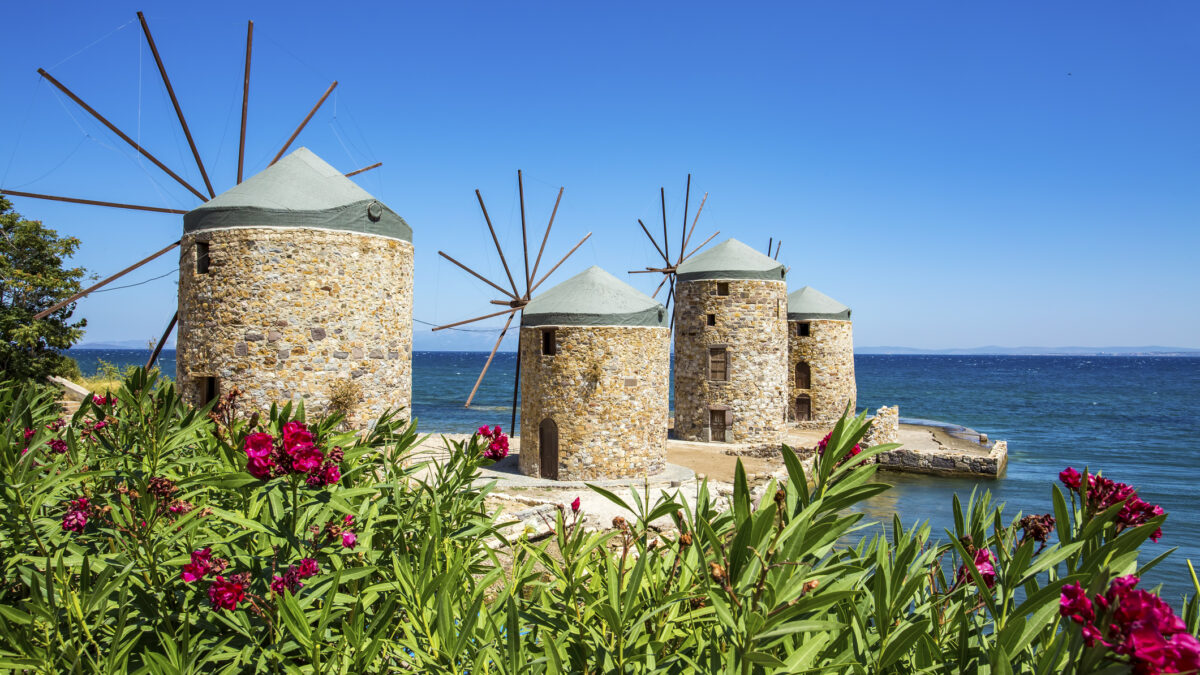Chios is an island in the northeastern Aegean, just off the coastline of Asia Minor. It is the 5th largest island in Greece.
Its largest settlement and main port is the town of Chios, also known as Chora.
Chios traces its history back to the Homeric period and draws its name from references in Greek mythology. With a history that stretches from antiquity to the present day, the island’s profile has been shaped by the influences it received throughout the years. These influences can be admired at the Byzantine Museum, the local medieval castle, the Ottoman-period religious buildings, etc.
Historically, Chios has been associated with seafaring, a profession that enabled its inhabitants to amass wealth and prestige, both fully on display in the island’s impressive traditional manor houses.
In 1822, Chios suffered a major tragedy when the Ottomans massacred the local population. This horrific event served as inspiration for Eugène Delacroix’s famous painting ‘The Massacre at Chios’.
Blessed with an extensive coastline, Chios has a plethora of beaches that are sure to satisfy even the most demanding visitors. From isolated locales to more easily accessible places, whether rugged or more family-friendly, pebble-strewn or sandy, there is one thing the island’s beaches all have in common: their crystal-clear waters, set within a truly spectacular natural environment.
Mesta and Vrontados are two of Chios’ best-known settlements. The former is perhaps the most well-preserved medieval village on the island. It is a labyrinthine fortified settlement first established in the 12th century, its construction serving as a form of protection from external threats. Vrontados is a seaside village where, according to a local custom, every Easter the inhabitants perform a truly spectacular event, the ‘rouketopolemos’ (literally ‘rocket war’).
Cuisine
Chios is commonly referred to as “myrovolos” (Greek for ‘exuding aromas’) thanks to the distinct aroma of the mastic and citrus trees that blanket the island and give it its distinct character.
Naturally, the island is renowned for its mastic, a product not found anywhere else in the world; it is collected from the mastic trees that grow in the mastichochoria region in the island’s south, where the local inhabitants have developed an intricate extraction technique known as kentima or ‘kentos’. It is a practice that has been recognised as an element of humanity’s intangible cultural heritage. Mastic is used as an aromatic in almost every confectionery preparation on the island, in the local spirit production – being prominent in ouzo and various liqueurs – as well as in the local souma. It is also popular on its own, served as a spoon sweet (submarine). In addition, mastic has a number of uses in modern cosmetics and pharmaceuticals.
The island’s citrus fruits, especially oranges and the characteristic local tangerines, also feature prominently in its agricultural production.
Chios also produces a renowned variety of wine, known as ‘Ariousios’. This variety has been known since antiquity, but it has only recently been returned to active production. Beer is also produced on the island.
Chios produces a soft, light white cheese from cow’s or goat’s milk; exceptional thyme, pine, polyfloral and citrus honey; world-famous almonds; Lactarius salmonicolor mushrooms (called “amanites” by the locals) in the autumn; striking varieties of aromatic herbs; throuba olives, known locally as kourmades; and handmade pasta.
The traditional sweets produced on Chios are masourakia – elongated sweets made with crispy phyllo dough and butter or margarine and mastic, among other ingredients, as well as almond sweets.
How to get there
Chios is an island in the Northeastern Aegean and is serviced by ferry from Piraeus.










